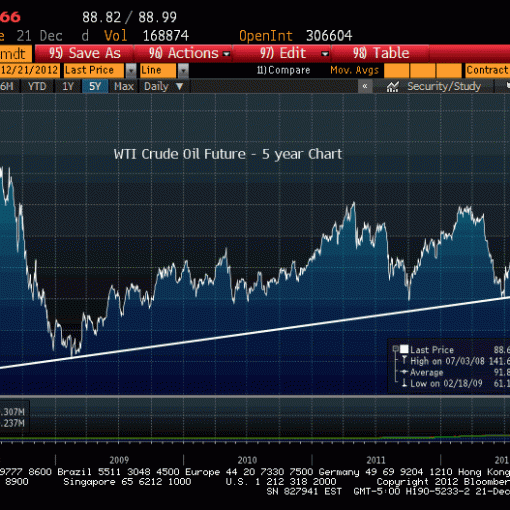 Author: Tyler Kocon, Split Rock Private Trading
Author: Tyler Kocon, Split Rock Private Trading
Covestor model: Equity Rotation
There is no denying that there is great uncertainty surrounding the mobile phone market. The four major U.S. carriers are locked in a cutthroat, all-or-nothing competition with no clear winner in sight.
AT&T (T) and Verizon Wireless (VZ) are managing. Meanwhile, Sprint Nextel (S) seems to be lagging behind as the company struggles under the massive amounts of debt they took on to benefit from the iPhone surge. While Sprint must deal with their own set of financial issues, both AT&T and Verizon Wireless have not benefitted from the iPhone’s popularity quite like the typical investor might imagine. Over the past 5 years–from 2/9/07 – 2/2/12– neither company is trading at a value above their prices in 2007.
As of February 2, Verizon Wireless is currently trading about -1.07% below their price 5 years ago, while AT&T is selling -21.85% below their price in 2007. Apple may be one of the world’s most valuable companies providing a very popular product, but the iPhone hasn’t been enough to bolster share prices of either of the country’s two largest mobile providers.
There may be better low hanging fruit for investors in the infrastructure space. As long as there are cell phones, there will always be a need for cell phone towers to provide their service. Instead of trying to decide and analyze which cell phone company or hand-held device manufacturer is going to provide better returns, why not make a play on their infrastructure?
One company of note is American Tower (AMT). The company is by definition a real estate company. They maintain themselves and generate revenue by leasing over 39,000 towers worldwide. With a significant part of these leases, the tower is leased not to one customer but several companies. That enhances the revenue stream. Over the same 5-year period (2/9/07 to 2/2/12), AMT has returned over 57%. Clearly the value of the cell phone industry does not lie solely in the hands of the providers.
Taking a deeper look into the fundamentals of AMT shows some interesting numbers, according to our analyst Brian Michaud. The stock is currently selling at 92.87 times their earnings. However, as their base of operations expands, so will their bottom line which may return more earnings to shareholders.
Here at Split Rock Private Trading and in our Equity Rotation Model, we like to play the emerging markets economies through derivatives like AMT. For example, AMT maintains a focus on developing their international properties, which accounted for 19% of their revenue in 2010, according to the company’s annual report. A majority of these properties are located in emerging Latin and South American markets like Chile, Brazil, Peru, Colombia and Mexico.
Making a play on AMT is an exceptional way to balance the strength and financial reliability of an American corporation while also exposing your position to the growing middle classes of emerging markets. As this customer base continues to expand, AMT will be there to construct and maintain towers and reap profits from increased bandwidth.
As of January 2012, American Tower was reorganized into American Tower REIT, Inc. The newly acquired REIT status typically provides investors with a way to invest in commercial real estate and reap the profits of traditionally high yields. Traditional investors may be searching for the next company set to ride the coattails of the iPhone all the way towards large returns, however, conventional wisdom and 5 years of stock performance indicate that the returns are not necessarily located in the providers themselves. All you need to do is look up or check your service. As long as there are cell phones, there will be a need for companies like AMT.


